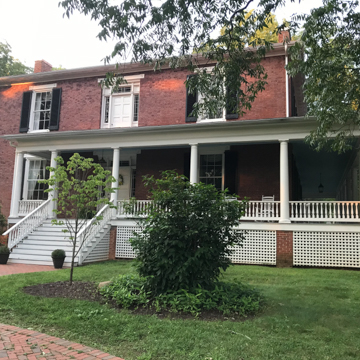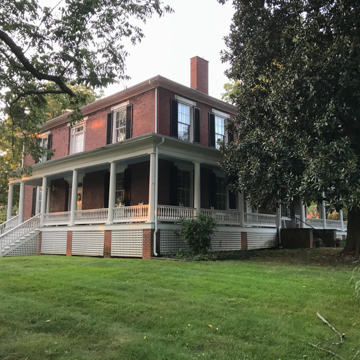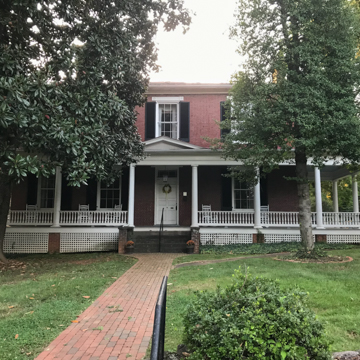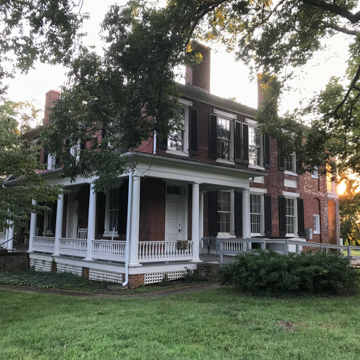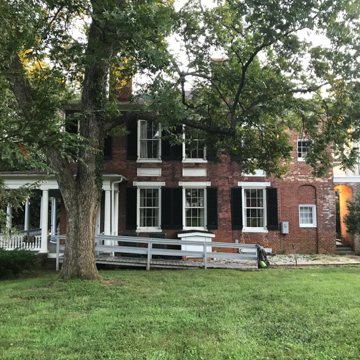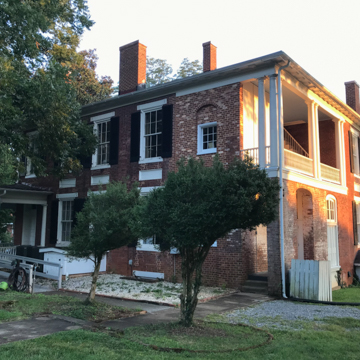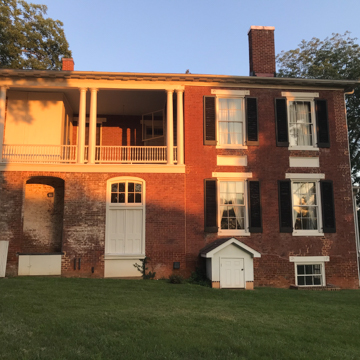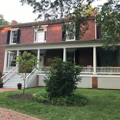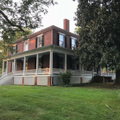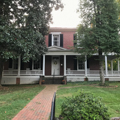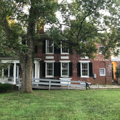Originally part of a farm on the outskirts of town, this large red brick house is now a house museum. It was constructed for Frances Steptoe Burwell and her husband, William M. Burwell, a political and social leader and the son of William A. Burwell, secretary to Thomas Jefferson. The house has two stories over a raised basement, a low hipped roof, wooden panels between the first and second stories, and a recessed loggia set in the house's northwest corner. All are unusually elaborate features for a Virginia Piedmont house. An early-twentieth-century one-story wraparound porch is an uneasy attempt to link the main and side entrances. On the interior the house is divided into two equal sections, each with a formal stairway. Like Otterburn (BD20) and Three Otters (BD19), the interior draws heavily from Asher Benjamin's pattern book The Practical House Carpenter (1830).
You are here
Avenel
If SAH Archipedia has been useful to you, please consider supporting it.
SAH Archipedia tells the story of the United States through its buildings, landscapes, and cities. This freely available resource empowers the public with authoritative knowledge that deepens their understanding and appreciation of the built environment. But the Society of Architectural Historians, which created SAH Archipedia with University of Virginia Press, needs your support to maintain the high-caliber research, writing, photography, cartography, editing, design, and programming that make SAH Archipedia a trusted online resource available to all who value the history of place, heritage tourism, and learning.




















